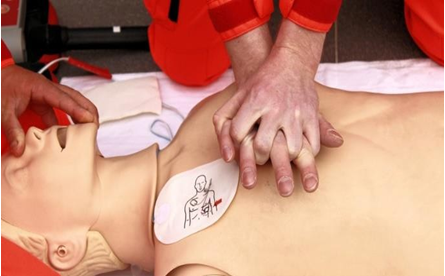Before 2010, the importance on CPR had been airway, breathing, and circulation. But, research findings from people that required CPR for emergency care recognized a trend: People that survived a cardiac event generally had more chest compressions—circulation. The emphasis on chest compressions is the blood circulates with each press on the chest wall because blood is manually pushed to vital organs such as the brain. By maintaining blood to circulate throughout the body, cells deliver the oxygen when the person’s heart is no longer effectively independently beating. It seems simple :Push hard and Push fast. But, effective chest compressions has to be at a specific rate—100 to 120 beats per minute; a specific amount—30—with ventilation—2 breaths; and at a specific depth at least 2inches (5cm) in the adult individual. This is High-Quality CPR.

